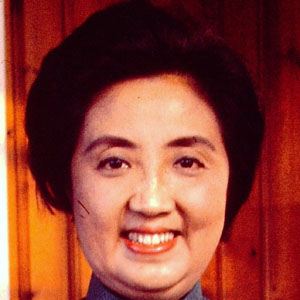

Don’t bother with a round-bottom unless you have a high end stove with a wok ring built in. Helen: In general, everyone should use a flat-bottom wok or stir fry pan. Do you have words of advice to ease the mind of a timid first time wok user or potential purchaser? N: Many home chefs enjoy stir fry, but may be intimidated by the idea of using a wok at home. Some of the mandolines out of Japan are very useful for julienne ingredients. Better materials and better designs are safer, easier, and easier to clean.

A good peeler that’s sharp and doesn’t cut into your hand helps, a good garlic press helps, I find there’s more comfort in today’s tools. Better equipment has made the preparation easier.

N: Given today’s modern cookware and gadgets, do you find that creating great Asian cuisine is any easier for the home chef than it would have been, say, 50 years ago? Helen: The flat-bottom 14” wok or the 12” stir fry pan. N: What piece of cookware or kitchen gadget has been the most helpful for you, or made a dish you make easier to create? It stems from the original design from my mom, but higher quality. With the Helen’s Asian Kitchen line, we have taken the flat-bottom wok design and made it into a quality piece- added nonstick coating, made with a carbon steel of a heavier gauge, the handles are riveted and not just spot welded. In China today, more people use propane and have stoves with flat burners in urban areas and most people there also now use a flat-bottom wok instead of the round-bottom style. Mother added a skillet type handle instead of the two short wire handles that were common on the round-bottom wok the latter was impractical as it meant you needed two hands to pick it up, and another person to help you get ingredients out.Įveryone now understands the importance of a flat-bottom wok. Helen: A Flat-bottom fits securely on a burner it’s safer, and more stable. N: What are the benefits of a flat-bottom wok? It took years to educate people on the benefits of a flat-bottom wok. In the early days no one understood it because they hadn’t seen one. Since we had flat stoves in the US, mother developed a wok for this type of stove. In China, they had a stove with a hole and the round-bottom wok sat in the hole, with the base close to the heat source. Helen: Mom was the first person to develop a flat-bottom wok, which is my number one go-to tool still today. N: What cookware and gadgets were essentials for your mom, and are they the same products that are essentials for you? We were living in Cambridge at this time, where I grew up. This was in the 50’s – the pressure cooker was aluminum, as I recall. Gadgets were at a minimum as not many were on the market. She used bamboo chopsticks in cooking, for stirring and picking up pieces. Good knives, both Chinese style and western style, and chopsticks were also important. She wanted a round edge to get into the pan corners and she liked cooking to be quiet. Mother used the pressure cooker pot and wooden spoons.

Thinking about the traditional Chinese kitchen, it tends to be a spartan place. This way there were no hot spots high sides enable stirring without food falling out. Mother used a heavy duty pressure cooker pot. Growing up we never had a round-bottom wok, mother didn’t believe in them because she felt it didn’t fit properly on the American stove even with the ring which is used to support the wok when on a regular range, helping direct heat to the bottom of the wok and provide stability. Many times a year we had celebratory food. I can’t remember all 100 dishes now many were specialties from Shanghai where she grew up, and Chinese comfort food, festival foods enjoyed during the dragon boat fest or Chinese New Year. My mother was a fabulous cook, mostly Chinese food. I came up with 100 dishes! In terms of being exposed to food, I was. In terms of food, when I wrote my first cookbook I made a list of all the dishes I remember my mother cooking at home. Nicole Herman: Helen, your mother Joyce Chen was a well-known Asian chef, so you must have been exposed to a lot of great food and cooking equipment while you were growing up.


 0 kommentar(er)
0 kommentar(er)
